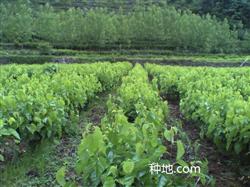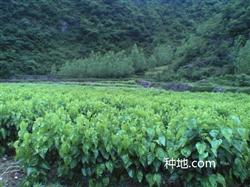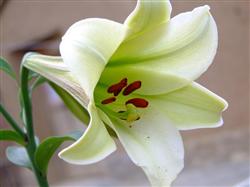How to manage the mulberry garden in spring?

How to manage the mulberry garden in spring? The main points of spring mulberry garden management are as follows: strengthen fertilizer and water management. Spring fertilizer can be applied about 20 days before mulberry germination. The mulberry trees used for feeding young silkworms were applied first, and the strong silkworms were applied after mulberry; mulberry fields on clay land were applied first, and sandy land was applied later. Generally, spring fertilizer is applied at the beginning of March, and it should be finished 30 days before the use of leaves at the latest. Spring fertilization is mainly available nitrogen fertilizer, supplemented by rotten human feces and urine. Fertilizer application amount and methods: generally 20-40 young trees or 10-20 strong trees per kilogram of standard chemical fertilizer, 20 young trees or 10 strong trees per kilogram of human manure, 5 kg per young tree and 10 kg per strong tree. When fertilizing, ring ditches can be dug at the outer edge of the crown projection or slightly farther away, and ditches and holes can also be dug on both sides of the tree, with a depth of 16-30 cm. Cover the soil in time after the fertilizer is applied into the ditch hole to avoid volatilization of the fertilizer. After fertilization, it is best to carry out a ploughing to loosen the trampled ground. The first watering in spring should be carried out 15-20 days before mulberry germination, combined with fertilization, the second watering should be carried out during germination, and the third watering should be determined according to the soil moisture at the depth of 2 cm underground. It is the appropriate time for watering when the soil is clutched and dispersed as soon as it is loosened. Do a good job of spring cutting to promote the formation of young mulberry and the rejuvenation of old mulberry. During the period of tree type formation, young mulberry is mainly cultivated tree type, and all branches can be cut off before mulberry germination in early spring. Aging mulberry, whose branches are thin and short, is not suitable for summer felling, but can carry out spring felling and summer strong cutting, that is, cutting off the branches, lowering the crown and rejuvenating and renewing before the mulberry sprouts in spring. Intercropping legume crops in spring. Mulberry intercropping leguminous crops such as soybeans and mung beans can loosen soil, inhibit the growth of weeds, and increase fertilizer sources through nitrogen fixation by rhizobia of leguminous crops. Take mung bean as an example, use 4-5 kg per mu. Mung bean is generally a sowing, a harvest, the appropriate time for harvest is about 60 days after sowing in full bloom, after cutting on the spot. Timely prevention and control of diseases and insect pests. Mulberry shell insects, mulberry thrips and other pests and pathogens of some diseases of mulberry overwintered in dead piles and dead branches, and the dead branches were burned centrally by pruning. Before germination, spray the branches and the surface around the mulberry with cupric ammonia solution. One week later, spray 1000-1500 times of trichlorfon or 1500 times of phoxim. In the stage of mulberry germination, the overwintering larvae of mulberry inchworm and mulberry caterpillar were captured to protect mulberry buds. In April, the oviposition leaves of mulberry wood lice were removed and burned, and the newly hatched larvae of wild silkworms were caught and killed before the dew was dry in the early morning. According to the picking sequence of mulberry leaves, the mulberry garden was sprayed with 4000-8000 times of permethrin or 2.5% of 4000-10000 times to kill mulberry inchworm, mulberry caterpillar, mulberry weevil, wild silkworm and so on. In early April, to control mulberry leafhopper and scale insects, spray with 1500 times of 50% marathon emulsion or 2000 times of 80% dichlorvos emulsion. More mulberry planting techniques
- Prev

What about the low yield of mulberry garden?
Mulberry garden has been planted for many years, and the output has not been high. How should we transform it? The low yield of mulberry garden can be reformed by the following methods: first, infill replanting 1, pressing plant 2, strong seedling filling: mulberry garden with wide row spacing can replant strong mulberry seedlings between plants or rows. Second, transplanting renewal.
- Next

Large area planting technique of Rose
Now many netizens have planted lilies or sent lilies to relatives and friends. Today, I would like to introduce the symbolic significance and characteristics of lilies: Lily is a world-famous flower that has been loved since ancient times. Origin and distribution: temperate regions such as China, Japan, North America and Europe. Lilium is a perennial herb.
Related
- Fuxing push coffee new agricultural production and marketing class: lack of small-scale processing plants
- Jujube rice field leisure farm deep ploughing Yilan for five years to create a space for organic food and play
- Nongyu Farm-A trial of organic papaya for brave women with advanced technology
- Four points for attention in the prevention and control of diseases and insect pests of edible fungi
- How to add nutrient solution to Edible Fungi
- Is there any good way to control edible fungus mites?
- Open Inoculation Technology of Edible Fungi
- Is there any clever way to use fertilizer for edible fungus in winter?
- What agents are used to kill the pathogens of edible fungi in the mushroom shed?
- Rapid drying of Edible Fungi

